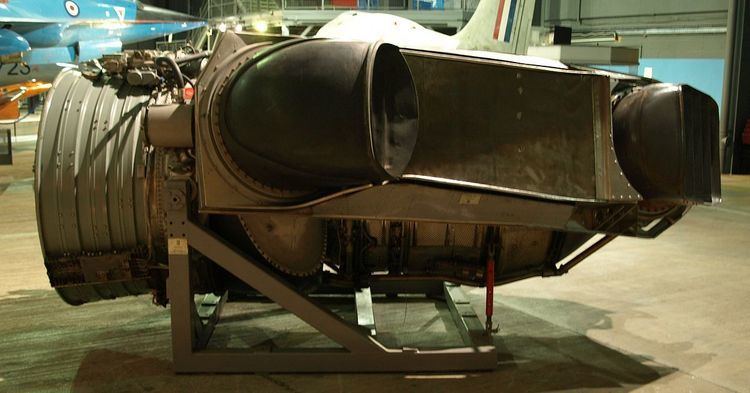 | ||
The Bristol Siddeley BS.100 was a British twin-spool, vectored thrust, turbofan aero engine that first ran in 1960. The engine was designed and built in limited numbers by Bristol Siddeley Engines Limited. The project was cancelled in early 1965.
Contents
Design and development
Based on the 300-series Olympus, the BS.100 was similar in general arrangement to that of the company's Pegasus design, but with the addition of plenum chamber burning (PCB), to enable the projected Hawker Siddeley P.1154 VSTOL fighter design to accelerate to supersonic speed. PCB is akin to reheat, but is only applied to the bypass stream (i.e. the front nozzles), as the flow turns from fan exit to the nozzle bearing plane. Variable area front nozzles were required, to maintain consistent fan matching regardless of whether the PCB was alight.
The BS.100 was also intended for the Fokker Republic D-24.
Engines on display
A preserved Bristol Siddeley BS100 is on public display at the Fleet Air Arm Museum, RNAS Yeovilton.
